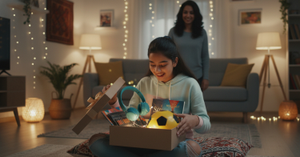“What children drink matters but how they drink it matters just as much.”
Water is essential for your child’s growth, energy, focus, and even emotional balance. Most parents go to great lengths to ensure their children are hydrated, especially during school and outdoor play. But what often goes unnoticed is what kind of bottle they’re drinking from, especially when it’s plastic.
Plastic water bottles, especially the reusable kind, are a common sight in school bags, playgrounds, and lunchboxes. They’re light, easy to handle, and inexpensive. But these bottles may carry hidden risks that could compromise your child’s health in subtle but serious ways.
Plastic Isn’t Just Plastic: What’s in the Bottle?
There are many types of plastic, and not all are created equal. Reusable plastic bottles may contain chemical additives to make them flexible, durable, or transparent. Some of these chemicals can leach into the water, especially when the bottle is:
- Exposed to heat (like being left in a school bag outdoors)
- Repeatedly used and washed
- Containing lukewarm or hot water
- Scratched or worn from rough handling
Even “BPA-free” bottles may not be safe. Some BPA alternatives, like BPS or BPF, show similar biological effects in the body, especially on children’s hormones.
Key Health Risks of Plastic Bottles in Children
1. Hormonal Disruption
Plastic water bottles may contain endocrine-disrupting chemicals (EDCs), which can interfere with the body’s natural hormone systems. In children, this may contribute to:
- Early onset of puberty
- Altered thyroid function
- Changes in appetite regulation or metabolism
- Emotional and behavioral shifts
This doesn’t happen overnight but regular exposure over months or years can have cumulative effects.
2. Bacterial Contamination
One of the most overlooked dangers of reusable plastic bottles is hygiene.
- Plastic tends to retain microscopic scratches, which can harbor bacteria.
- Children often forget to wash their bottles daily, especially if the water “looks clean.”
- Warm, moist interiors make an ideal environment for bacterial growth, including E. coli and mold spores.
Some studies have found that unclean reusable bottles can harbor more bacteria than a pet bowl or toilet seat, especially if not washed properly.
3. Plastic Particles in the Body
Recent studies have detected microplastics, tiny particles that break away from the container, in the urine, stools, and even the bloodstream of children.
Though the long-term effects are still under investigation, microplastics are suspected to contribute to:
- Gut inflammation
- Immune dysfunction
- Disruption of cellular health
Plastic particles may also act as “carriers” for other environmental toxins, making them more harmful once absorbed into the body.
4. Impact on Taste and Water Intake
Children are sensitive to taste and smell. Over time, plastic bottles may absorb odors (like food smells from the school bag) or develop a plastic-like aftertaste.
This can discourage children from drinking enough water, leading to mild dehydration. Dehydration affects:
- Concentration and focus
- Mood and irritability
- Digestion and bowel regularity
Not All Bottles Are Safe: What to Watch Out For
Here’s what you, as a parent, should check:
Avoid:
- Bottles with recycling codes #3 (PVC), #6 (PS), or #7 (Other)
- Bottles with fading labels, cracked lids, or rough inner surfaces
- Bottles sold without any safety markings or brand information
Look for:
- Stainless steel bottles (double-walled insulated ones are ideal for keeping water cool)
- Borosilicate glass bottles with silicone sleeves (better for older children or at home)
- BPA-free Tritan plastic (only if it’s certified food-grade and regularly replaced)
Doctor’s Advice: A Pediatrician’s Perspective
Dr. Anuj Kulkarni, a pediatrician in Pune, warns:
“Hydration is essential, but the wrong water bottle can do more harm than good. I advise parents to treat bottles like any food-contact item, clean them daily, replace them regularly, and never store warm liquids in plastic unless it’s medical-grade.”
Simple Safety Habits for Parents and Kids
Here are some easy-to-follow tips that protect your child while keeping things practical:
Wash daily:
Use warm water and mild soap to clean bottles every evening. Let them air dry fully.
Replace frequently:
Don’t wait for visible damage. Rotate bottles every 4–6 months, even if they “look fine.”
Avoid sun exposure:
Teach your child not to leave the bottle in direct sunlight, like inside the school van or on a windowsill.
Don’t freeze or microwave plastic bottles:
These conditions accelerate chemical breakdown.
Keep it water-only:
Avoid using the same bottle for juices, flavored water, or milk. Residues can encourage mold growth.
Conclusion: Choosing Safety Over Convenience
A water bottle is not just a school supply, it’s something your child uses every single day. While plastic may seem like a harmless option, it comes with risks that aren’t immediately visible. By switching to safer materials and building smart habits, you’re not just giving them clean water, you’re giving them a healthier future.
Let’s make hydration safe, one sip at a time.








Be the first one to comment on this story.